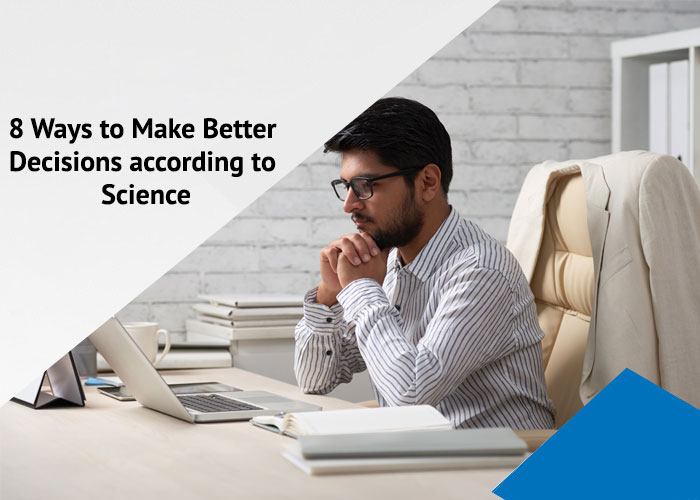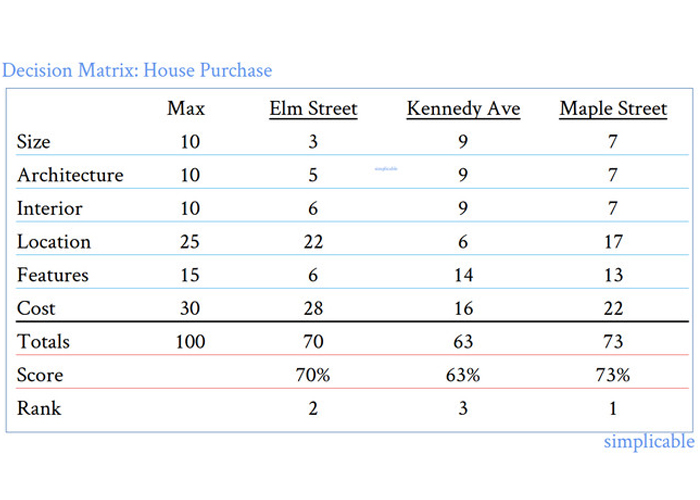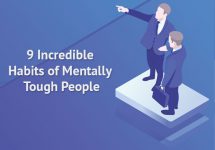
It is common wisdom that your decisions shape your life. Some decisions are tough, others are trivial, but it is the process that counts.
Making top decisions requires us to examine our choices, assimilate information, counter emotional biases and take the right step. Scientists have discovered how human beings are biased in their decision making and what triggers them into making choices.
Whether you’re a top executive or an entry level professional, you can enhance your decision making abilities with certain techniques. By using a structured methodology and approach, you can take better decisions. Here’s how science can help you to improve your decision making:
1. Loss Aversion

Human beings are averse to losses. They detest losing things more than they enjoy gaining them. This claim has been backed by research done by Nobel Laureates Daniel Kahneman & Amos Tversky published in the Quarterly Journal of Economics.
In other words, this research has shown if someone gives you $1000 you will feel a small boost in satisfaction, however, if you lose $1000 you will feel higher loss in satisfaction.
Our choices and decisions are made more to avoid losses and retain things we own. We overvalue things when there is a chance of losing them. It can hamper our decision making as we lose perspective of the real picture.
2. Gut Feeling
There are some situations where you cannot assimilate information or know for sure what will be the best way forward. In such situations, your gut feeling or intuition should not be ignored.
Research shows that our instincts often first hit us on a visceral level. This helps us make quick decisions on what is good or bad, safe or dangerous and what we need to know well before our consciousness catches up.
The intuitive brain is at work and processing information for us even when we are not aware of it. When making the big decisions, it is the inner wisdom and gut feeling that can guide us.
People who meditate and devote time for training their minds often develop clarity of thought. It helps them fine tune their intuition and take better decisions.
3. Consider your Emotions

Emotions are an integral part of decision making. They influence the decisions we take and affect them significantly.
According to Herbert Simon, Nobel Laureate Scientist, “emotions influence, skew or sometimes completely determine the outcome of a large number of decisions we are confronted with in a day.”
Decisions can be hampered by emotions. When you take a decision, your limbic system – the brain’s emotional centre – is active. If you try to make choices when you’re biased by emotions, it can affect the outcomes.
Think through your options and being centered when you take decisions is important. Decisions taken during anger or ecstasy may often mislead you.
4. Explore Options
When confronted with decisions, we tend to look at only immediate options. It restricts our choices and decision making. For e.g. Should I buy this house or not? It involves a yes, no option only. These binary choices are restrictive.
For taking decisions, wider range of options must be explored. When choices are explored exhaustively, it helps you zone into the right decisions.
Our brains are often influenced by availability heuristic. It refers to a common mistake where our mind is swayed by immediate examples when evaluating a decision or concept.
Just because it is easy to remember doesn’t make things important. An example of availability heuristic is shark attacks, when you see it on news, you may think it is quite common.But, more people die of road accidents in one year, than shark attacks in 100 years.
We attach more value to things we remember and undervalue things that are not in our knowledge. It can cloud our perception. Hence, we need to strive beyond the immediate options and explore things thoroughly before taking decisions.
5. Regret Theory

The theory of regret aversion states that when facing a decision, people might anticipate regret and thus incorporate in their choice their desire to eliminate or reduce this possibility.
In other words, regret can either deter you from doing something or motivate you to take action in order to avoid the consequences.
For e.g. if you want to buy a house, you are terrified of the wrong choice. You read magazines, ask advice from experts, and consult friends. You take advice and educate yourself first before buying the house to minimise regret.
6. Decision Matrix
Decisions can be quite complex. They are rarely black and white. We need to consider many dimensions and scrutinise several aspects before taking the right ones.
Stuart Pugh, professor and head of design at the University of Strathclyde, created the decision matrix method to help in selecting design alternatives. Since then this method has gained immense popularity.
A decision matrix is a table that lists decision criteria on one side & your alternatives on the other side. You can also assign weights to each criteria and calculate the final scores for all alternatives.
Consider for example, you want to buy a house. You have 3 locations(Elm Street, Kennedy Ave & Maple Street) in mind for this. Now, you list the criteria for purchasing the house, say size, architecture, location, features, cost etc. in the first column. Assign weightage to each of these factors as per your needs. On every row, you can give points to every alternative.

You can compute the totals for each of the three houses and choose the best one as per your needs. This decision matrix is a great way to deduce the best choice with a simple mathematical model.
7. Anchoring

The anchoring effect refers to a cognitive bias that describes the human tendency to rely heavily on the first piece of information offered to them. Decision making tends to be influenced by the initial piece of information available to us.
Shopkeepers use the anchoring effect to price the items on shelves. When you walk into the shop, higher priced items are visible to you. For e.g. if you look at watch priced $9999 at the entrance and then you notice another watch for $999, it will seem more reasonable to you. Most people tend to pay more as a result of anchoring effect.
When making decisions, it is important to evaluate information carefully and not be biased by the initial information for subsequent judgements.
8. Limit the Number of Decisions
How do you ensure you take quality decisions? The math says, you need to focus on fewer decisions to make the right choices. Almost all top professionals, athletes, artists, businessmen understand their core areas of focus. They eliminate unnecessary decisions and choices.
You can free up your mind space by focusing decisions on things that matter the most. Decision fatigue refers to the deteriorating quality of decisions made by an individual after a long session of decision making.
For taking the hardest decisions, you need to be at the peak of your cognitive and mental energies. Research on decision fatigue has shown that once you’re mentally depleted, you become reluctant to make trade-offs, which involve hard & taxing form of decision making.







